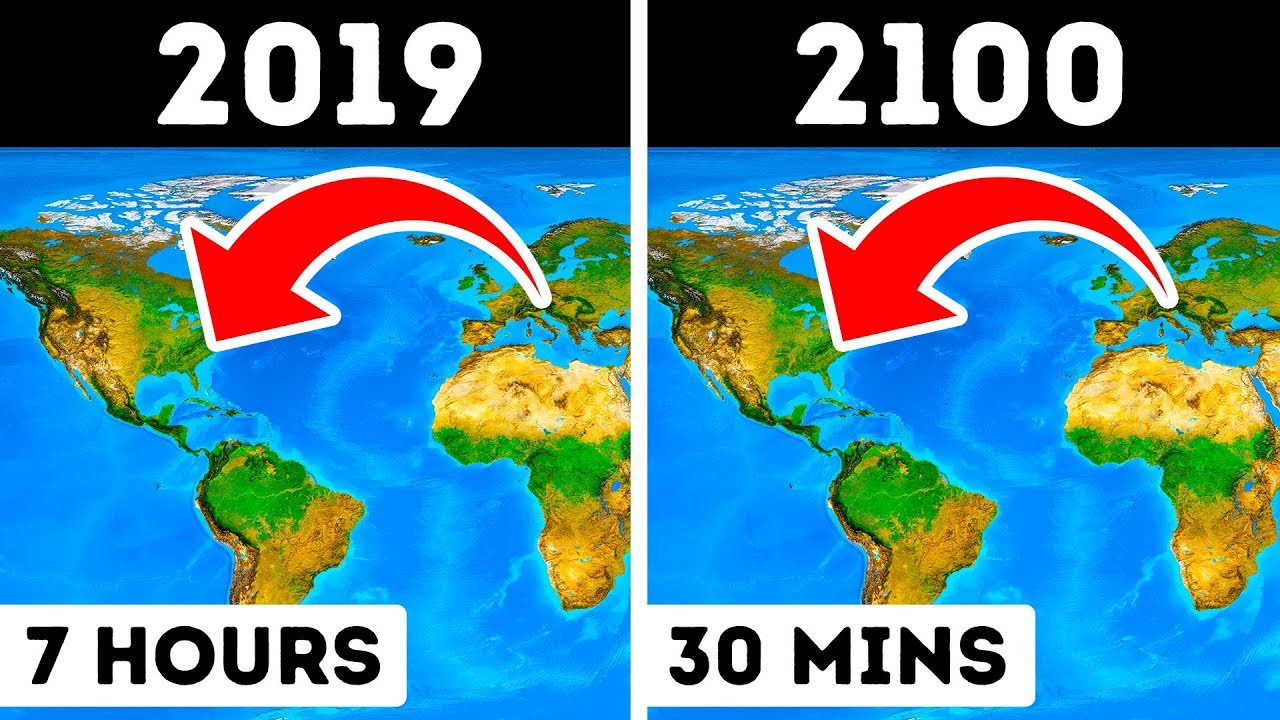No One Will Recognize the World by 2100
A scientist named Niels Bohr once said: “Prediction is very difficult, especially about the future.” It turns out that there are some trend-based prophecies for the far-off, distant future! Need any examples? Okay, here you go.
By 2037, all the Arctic sea ice might have disappeared altogether. By 2075, the ozone layer has healed itself entirely. No more holes that let in dangerous ultraviolet light that causes serious diseases. By the end of the century, almost 83% of the Amazon rainforest has disappeared due to climate change and consequent droughts. Are you interested? So check out these amazing things that could become our reality by 2100!
Other videos you might like:
Stephen Hawking’s 7 Predictions of Earth’s Demise in the Next 200 Years https://www.youtube.com/watch?v=Lq9wipOftXw&
What Will Happen to Humans Before 2050 https://www.youtube.com/watch?v=Cip3LmqQ7Y0&
4 Mystery Doors That Should Never Be Opened https://www.youtube.com/watch?v=xfYnUaLpdc0
TIMESTAMPS:
Years 2020-2029 0:40
– The most populated country 0:44
– Smart cars 1:38
– No more passwords 2:08
– Self-cleaning buildings 2:27
– The first space hotel 2:45
Years 2030-2060 3:49
– All the books are digitalized 4:08
– Robots in hospitals 4:37
– Supersonic jets 4:53
– Tiny supercomputers 5:24
– Vertical farms 5:49
Years 2061-2100 6:08
– Sensors all over your body 6:36
– Transatlantic tunnel 7:12
– No regular snowfalls 7:27
– Hypersonic tube trains 7:37
– Many languages have died out… 8:12
#humanfuture #future #predictions
Music by Epidemic Sound https://www.epidemicsound.com/
SUMMARY:
– By 2020, they have finished the construction of the tallest structure in the world. The top of Jeddah Tower in Saudi Arabia is towering above the planet at a height of 3,281 ft (1 km).
– Scrolls, which are, in fact, groundbreaking screens that you can roll up, have replaced good old solid tablets. The ultra-thin digital displays can reproduce video, images, and text, and let you browse the Internet.
– Self-cleaning buildings have appeared, which also fight smog and air pollution. They are coated with titanium dioxide that, when heated by sunlight, releases free radicals and breaks the grime down. Then everything gets washed away in the rain.
– By 2020-2021, the first space hotel has opened its doors for the first visitors. No wait that’s a bad idea. They all get sucked out into the vacuum. How about we open “airlocks” for them instead?) Either way, to see our planet from space, you still have to fork over about $9.5 million for a 12-day trip.
– By 2028, it’s become impossible to live in Venice, Italy. While the town is not entirely underwater, the water level is so high that people have deserted their houses. So, if you haven’t visited Venice yet, hurry up!
– By 2030, the Arctic ice sheet has significantly decreased in size. What’s more, all the ice in the Arctic Ocean melts during the summer.
– In 2033, a manned mission sets off for Mars. As for the whole space exploration program, also called the Aurora program, it’s going to concentrate on exploring the Moon, Mars, and nearby asteroids.
– Supersonic jets running on fuel made of a special air mixture have appeared. That’s why these days, you need 2 hours at most to get from London to New York.
– If your usual order is a cup of decaf coffee, you’re in for a pleasant surprise: by 2030, farmers have started to grow caffeine-free coffee beans.
– There are tiny sensors all over your body. Thanks to them, doctors can monitor your vitals round the clock.
– Due to the wide use of artificial implants, such as bionic eyes, synthetic blood, or ears with enhanced hearing, a lot of humans have become more non-biological than biological.
– Lots of Winter Olympic sites have become unsuitable for holding the event. There are no regular snowfalls, so many winter sports have been moved indoors.
– Many languages have died out, and the total number has dropped from about 7,000 to less than half of this figure.
– On the bright side, the average person works less than 20 hours per week!
Subscribe to Bright Side : https://goo.gl/rQTJZz
—————————————————————————————-
Our Social Media:
Facebook: https://www.facebook.com/brightside/
Instagram: https://www.instagram.com/brightgram/
5-Minute Crafts Youtube: https://www.goo.gl/8JVmuC
Photos: https://www.depositphotos.com
East News
—————————————————————————————-
For more videos and articles visit:
http://www.brightside.me/



![[ID: jvNU5bwzclI] Youtube Automatic](https://bizimtube.com/wp-content/uploads/2021/03/id-jvnu5bwzcli-youtube-automatic-236x133.jpg)
![[ID: 0yCJMt9Mx9c] Youtube Automatic](https://bizimtube.com/wp-content/uploads/2021/03/id-0ycjmt9mx9c-youtube-automatic-236x133.jpg)
![[ID: vAJM5EdDwjU] Youtube Automatic](https://bizimtube.com/wp-content/uploads/2021/03/id-vajm5eddwju-youtube-automatic-236x133.jpg)
![[ID: LxOmofEFub4] Youtube Automatic](https://bizimtube.com/wp-content/uploads/2021/03/id-lxomofefub4-youtube-automatic-236x133.jpg)
![[ID: wFAh77GBsHs] Youtube Automatic](https://bizimtube.com/wp-content/uploads/2021/03/id-wfah77gbshs-youtube-automatic-236x133.jpg)
![[ID: tjwrG4Debc4] Youtube Automatic](https://bizimtube.com/wp-content/uploads/2021/03/id-tjwrg4debc4-youtube-automatic-236x133.jpg)
![[ID: _28bYGZtnU8] Youtube Automatic](https://bizimtube.com/wp-content/uploads/2021/03/id-28bygztnu8-youtube-automatic-236x133.jpg)
![[ID: 1e7bhUjUEJ8] Youtube Automatic](https://bizimtube.com/wp-content/uploads/2021/03/id-1e7bhujuej8-youtube-automatic-236x133.jpg)
![[ID: QjyCviSKY2U] Youtube Automatic](https://bizimtube.com/wp-content/uploads/2021/03/id-qjycvisky2u-youtube-automatic-236x133.jpg)
![[ID: -5i-vB4-kFk] Youtube Automatic](https://bizimtube.com/wp-content/uploads/2021/03/id-5i-vb4-kfk-youtube-automatic-236x133.jpg)
![[ID: covHhQgr5kU] Youtube Automatic](https://bizimtube.com/wp-content/uploads/2021/03/id-covhhqgr5ku-youtube-automatic-236x133.jpg)
![[ID: mX7FEHws43A] Youtube Automatic](https://bizimtube.com/wp-content/uploads/2021/03/id-mx7fehws43a-youtube-automatic-236x133.jpg)